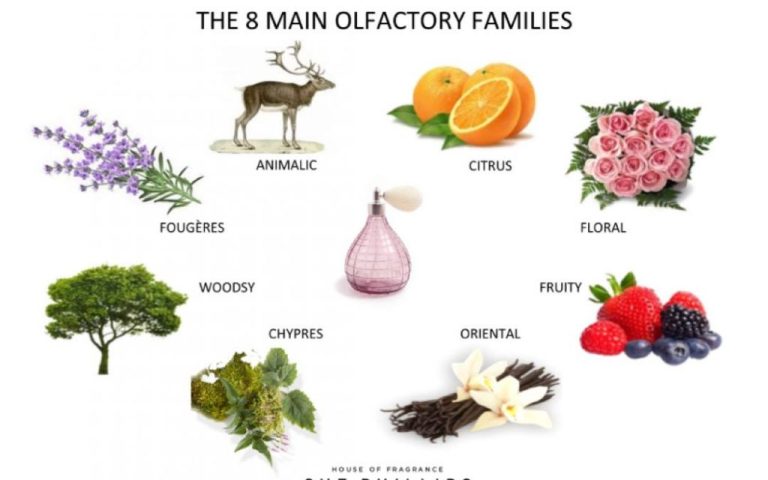What Scents Are Considered Citrus?
What are citrus fruits?
Citrus fruits are a group of fruits that belong to the Rutaceae family and have a distinctive, tart, citrusy flavor and aroma. Some of the most common citrus fruits include:
- Oranges
- Lemons
- Limes
- Grapefruits
- Tangerines
- Mandarins
- Clementines
- Satsumas
- Pomelos
- Kumquats
These fruits grow on flowering trees and shrubs and are characterized by a leathery rind or peel and juicy, segmented citrus pulp inside. The citrusy flavor comes from the fruits’ high content of citric acid and essential oils like limonene, citral, and linalool that are stored in their rinds, pulp, and peel.
Common citrus scent profiles
Citrus fruits are prized for their bright, fresh scents. Here are some of the most popular citrus fruits used in fragrances and their distinguishing scent characteristics:
Lemon – Lemons have a sharp, tart, and zesty scent. Their aroma is energizing and uplifting. The main scent compounds in lemon oil are limonene, beta-pinene, and gamma-terpinene.
Orange – Sweet orange oils like those from navel oranges have a sweet, bright scent. Key aroma molecules include limonene, myrcene, and linalool. Blood oranges have a more tart, berry-like scent.
Grapefruit – Grapefruits have a bittersweet, tart aroma with hints of tropical fruit. Grapefruit oil contains limonene, sabinene, and myrcene. Pink and red grapefruits tend to be less bitter than white varieties.
Lime – Limes have a fresh, sharp citrusy scent. Lime oil contains compounds like limonene, geranial, neral, and beta-pinene that create its distintive aroma. Key lime and Persian lime oils have slightly different scent profiles.
Mandarin – Mandarin oranges have a gentle, sweet, tangy scent. The main chemical constituents of mandarin oil include limonene, gamma-terpinene, geranial, and neral.
Bergamot – Bergamot has a delicate citrusy-floral scent. Its key aroma molecules are limonene and linalool. It adds an elegant nuance to perfumes.
In summary, citrus fruits each impart their own unique scent signatures to fragrances, ranging from zesty and tart to sweet and floral. Their abundant limonene content gives them a universally bright, fresh citrus character.
Other fruits with citrusy scents
While citrus fruits like oranges, lemons, and limes contain high concentrations of citrusy-smelling compounds, other non-citrus fruits also give off refreshing, zesty aromas. Here are some examples of non-citrus fruits with bright, citrus-like scents:
Pineapples – Pineapples contain bromelain enzymes that give the fruit its tangy, tropical aroma. The main compound responsible for pineapple’s citrusy scent is allyl hexanoate.
Currant – Blackcurrants and redcurrants have a tart, tangy flavor reminiscent of citrus. The potent, citrusy aroma comes from compounds like geraniol, limonene, and gamma-decalactone.
Rhubarb – Rhubarb has a very tart, sour taste and a strong, almost lemony scent. Citrusy compounds like limonene likely contribute to rhubarb’s bright, zesty aroma.
Quince – Quince fruit has an extremely aromatic, perfumed fragrance that smells distinctly of citrus. The main compounds that give quince its citrusy scent are limonene, gamma-decalactone and methyl anthranilate.
Yuzu – This East Asian fruit is prized for its intense citrus aroma and flavor. Just like other citrus fruits, yuzu’s rind contains high levels of fragrant citrus oils.
So while citrus fruits contain the highest concentrations of zesty, citrusy oils, other fruits can also provide bright, refreshing scents reminiscent of lemon, lime, and orange.
Citrus essential oils
Citrus fruits like lemons, oranges, grapefruits, limes, and more are commonly used to create essential oils. By cold pressing or steam distilling the rinds, flowers, leaves, or other parts of these fruits, the volatile citrus oils can be extracted. The most popular essential oils derived from citrus fruits include:
- Orange essential oil – Made from the rinds of sweet oranges, it has a sweet, bright, fruity aroma.
- Lemon essential oil – Extracted from lemon rinds, it has a fresh, zesty, lemony scent.
- Grapefruit essential oil – Derived from grapefruit peels, it has an uplifting, clean citrusy aroma.
- Lime essential oil – Steam distilled from lime peels, it has a sharp, bitter-sweet, limey fragrance.
- Bergamot essential oil – Cold pressed from bergamot orange rinds, it has a delicate, sweet, floral-citrusy scent.
These and other citrus essential oils are widely used in aromatherapy, natural perfumes, cleaning products, and more due to their fresh, pleasant scents and therapeutic benefits.
Using citrus in perfumes
Citrus notes are commonly used in perfumes to provide an invigorating, uplifting scent. The bright, fresh aroma of citrus oils makes them versatile ingredients that can be blended into perfumes in a variety of ways.
In perfume structure, there are top notes, middle or heart notes, and base notes. Top notes consist of light, volatile scents that make the first impression when a fragrance is applied. Citrus essential oils like lemon, grapefruit, bergamot, and orange are popular top notes. Their zesty, effervescent scents uplift the perfume and are often described as energizing, refreshing, and cleansing.
Middle notes emerge shortly after the top notes fade. Florals like jasmine and rose, spices like cinnamon, and fruits like peach are common heart notes. Citrus accents can add sparkle and vibrancy when blended with these fuller, rounded middle note scents. Bergamot and neroli, distilled from orange blossom, both have beautiful floral facets that allow them to blend seamlessly with floral heart notes.
Base notes ground the perfume, lingering on skin for hours after application. Warm, rich scents like vanilla, amber, musk, and woods deepen the fragrance over time. Citrus top notes help balance and brighten base note heaviness. Vetiver, patchouli, cedar and sandalwood base notes are often combined with bergamot, grapefruit or bitter orange top notes for this invigorating effect.
Thoughtful blending of citrus oils throughout the fragrance structure allows perfumers to create multifaceted scents with sparkling top notes, vibrant hearts, and grounded bases.
Psychology of Citrus Scents
Citrus scents are known for being uplifting, energizing, and refreshing. The bright, zesty notes can help improve mood, increase alertness, and even boost motivation. There are a few reasons why citrus is associated with these psychological effects:
Citrus scents contain molecules that stimulate the olfactory nerve. This interaction helps activate the limbic system, which is the part of the brain responsible for emotion and memory. Citrus aromas can trigger the release of neurotransmitters like serotonin and dopamine, leading to feelings of happiness and wellbeing.
Citrus is commonly associated with freshness. Many citrus fruits like lemons, oranges, and grapefruits have high water content. Their juicy, mouthwatering aromas trigger a sensory experience similar to tasting or drinking something cold and thirst-quenching. This cooling sensation is energizing and revitalizing.
The bright, sunny notes of citrus remind us of warm weather and time spent outdoors. Citrus blooms in the spring and summer, so its aromas are intrinsically linked to longer days, vacations, and a generally positive state of mind for many people.
Overall, the familiar invigorating scent of citrus fruits can help stimulate the mind and body. That makes citrus a popular choice for fragrances, aromatherapy, and household scents when an uplifting effect is desired.
DIY Citrus Scented Products
Citrus essential oils like lemon, orange, grapefruit, lime, and bergamot make great additions to DIY household products. The bright, uplifting scents of citrus can help clean and freshen your home in an all-natural way.
Here are some easy DIY recipes for citrus-scented products you can make at home:
Citrus All-Purpose Cleaner
Ingredients:
- 1/2 cup water
- 1/2 cup distilled white vinegar
- 15 drops lemon essential oil
- 10 drops orange essential oil
Instructions: Combine all ingredients in a spray bottle. Shake well before each use. For best results, do not rinse after spraying on surfaces.
Lemon and Lime Air Freshener
Ingredients:
- 1 cup water
- 1 tbsp baking soda
- 15 drops lemon essential oil
- 10 drops lime essential oil
Instructions: Mix all ingredients together in a spray bottle. Mist around rooms whenever you want a fresh citrus scent.
Grapefruit and Bergamot Reed Diffuser
Ingredients:
- 1/2 cup carrier oil like coconut oil or olive oil
- 10 drops grapefruit essential oil
- 5 drops bergamot essential oil
- 4-5 rattan or bamboo reeds
Instructions: Combine carrier and essential oils in a glass jar. Add reeds cut to size. Flip reeds regularly to absorb and disperse the citrus scent.
Citrus Scent Pairings
Citrus notes beautifully complement a variety of other fragrance notes. Here are some of the most popular pairings for citrus scents:
Florals
The bright sweetness of citrus marries beautifully with floral notes like rose, jasmine, neroli, and tuberose. The citrus uplifts the floral bouquet and keeps it from becoming too heavy or cloying.
Fruits
Pairing citrus with other fruits like peach, pineapple, mango, and berry notes creates a juicy, mouthwatering fragrance. The mix of fruits evokes tropical vacations and summer joy.
Woods
The freshness of citrus balances nicely with warm, rich wood notes like cedar, sandalwood and vetiver. The woods ground the brighter citrus in an appealing way.
Spices
Spicy notes like ginger, black pepper, and cardamom add a bite of heat that works well with tangy citrus. The spice energizes citrus scents beautifully.
Aquatic Notes
Cool, oceanic notes like sea salt, marine and ozone add a watery dimension that melds seamlessly with citrus. Together they create refreshing, clean scents perfect for summer.
History of citrus in fragrances
Citrus notes first started being used in perfumes during the Renaissance era. As global exploration expanded and new fruits were being discovered and imported to Europe, the alluring scents of these exotic citrus fruits began being incorporated into early perfume formulations.
One of the earliest perfumes to make use of citrus notes was Eau Admirable, created in 1709 by French perfumer Pierre Bourdon. This perfume featured fresh notes of lemon and bergamot. The citrusy cologne stood in contrast to the heavy, musky perfumes popular at the time.
Citrus became more widely used in perfumes during the 19th century as perfume moved away from just single floral notes and more complex formulations emerged. Famous early citrus-based perfumes include Eau de Cologne, first created in 1709, which mixed citrus oils like bergamot, lemon, mandarin and orange with herbal notes. The iconic Chanel No. 5, created in 1921, also made innovative use of aldehydes to add a clean, citrusy freshness to the floral blend.
Since those early days, citrus notes like lemon, bergamot, grapefruit and orange have become staple ingredients used to add an energizing, lively quality to perfumes and colognes for both men and women.
Citrus Scent Regulation
When using citrus oils in fragrances, there are some regulatory concerns to keep in mind. Certain citrus oils, like bergamot, contain chemicals called furocoumarins that can cause phototoxicity when exposed to UV light. This means the oil can react with sunlight and cause a rash or discoloration of the skin. Because of this risk, the International Fragrance Association (IFRA) has set recommended safe usage levels for phototoxic citrus oils like bergamot and lime. IFRA guidelines state that bergamot should be limited to 0.4% or less in leave-on products like perfumes. For rinse-off products like soaps, up to 5% bergamot can be used safely.
In addition to phototoxicity concerns, some citrus oils are restricted for use due to potential skin irritation. IFRA has set dermal sensitization limits for oils like lemon and orange. It’s important for perfumers to follow IFRA guidance and restrict phototoxic/sensitizing citrus oils to safe usage levels. Proper dilution and avoiding overexposure to sunlight when wearing citrus fragrances can help mitigate risks. Overall, citrus oils can be used safely in fragrances as long as proper precautions are taken.





